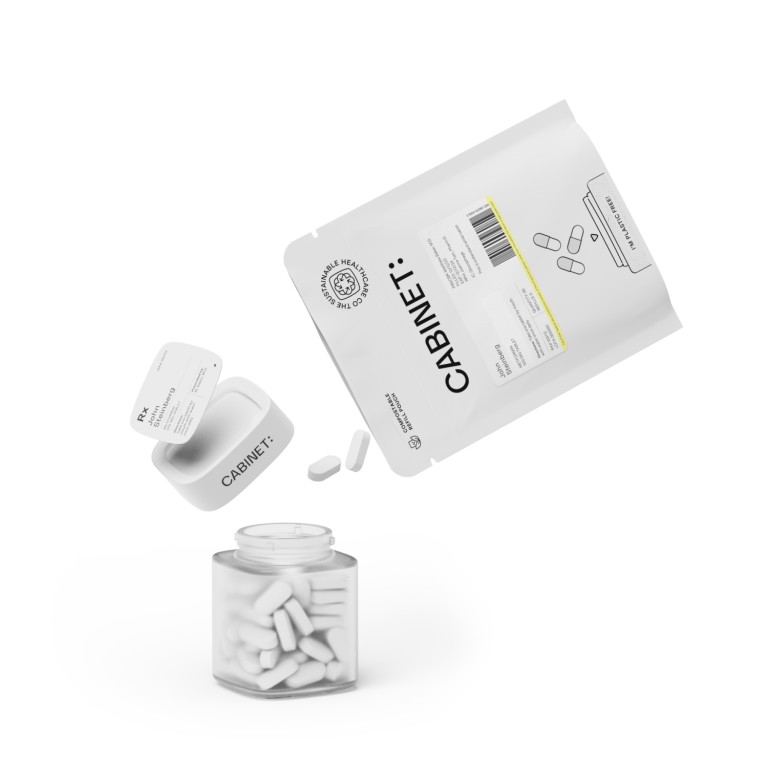In the realm of medicine, breakthroughs and advancements constantly shape the landscape of healthcare. One such advancement that has revolutionized stroke prevention is Plavix. With its remarkable efficacy and significant impact on stroke patients, Plavix holds the promise of a new era in stroke prevention. In this article, we will delve into the science behind Plavix, explore its role in stroke prevention, assess its impact on stroke patients, discuss the future developments in Plavix treatment, address concerns and misconceptions, and shed light on its global implications.
Understanding the Plavix Promise
Plavix, also known as clopidogrel, is a medication that belongs to a class of drugs called antiplatelet agents. It works by inhibiting the formation of blood clots in our arteries, which can lead to devastating strokes. Known for its remarkable efficacy, Plavix has become a cornerstone in stroke prevention strategies worldwide.
Patients who are prescribed Plavix are often seeking a reliable and effective way to reduce their risk of stroke. This medication has been extensively studied and has shown consistent results in preventing clot formation, providing patients with a sense of security and peace of mind.
The Science Behind Plavix
To truly appreciate the Plavix Promise, it is essential to understand the underlying science. Plavix exerts its effects by blocking a specific receptor on platelets known as the P2Y12 receptor. By inhibiting this receptor, Plavix prevents platelets from clumping together and forming clots, effectively reducing the risk of stroke.
Furthermore, the mechanism of action of Plavix is a testament to modern pharmacology's ability to target specific pathways in the body to achieve desired outcomes. This precision in targeting the P2Y12 receptor showcases the advancements in pharmaceutical research and development.
The Role of Plavix in Stroke Prevention
Preventing strokes is of paramount importance, as strokes can result in life-altering disabilities and even death. Plavix plays a vital role in stroke prevention by reducing the risk of blood clots, which are a leading cause of stroke. When prescribed together with aspirin, Plavix has been shown to significantly decrease the recurrence of stroke in patients who have already experienced an ischemic stroke or transient ischemic attack (TIA).
Patients who adhere to their Plavix regimen as prescribed by their healthcare provider are taking proactive steps towards safeguarding their cardiovascular health. By understanding the significance of consistent medication adherence, individuals can empower themselves to take control of their well-being and reduce the likelihood of experiencing a debilitating stroke.
The Impact of Plavix on Stroke Patients
The introduction of Plavix has not only transformed the way we approach stroke prevention but has also had a profound impact on stroke patients themselves.
Stroke, a leading cause of disability and death worldwide, has long been a medical challenge. However, with the advent of Plavix, a medication that inhibits platelet aggregation, the landscape of stroke treatment has seen a remarkable shift. Plavix, also known by its generic name clopidogrel, is a vital tool in the prevention of ischemic strokes, offering hope and improved outcomes for patients at risk.
Changes in Stroke Treatment
Thanks to the Plavix Promise, the landscape of stroke treatment has evolved significantly. Plavix is now commonly used after a stroke or TIA to prevent future episodes and lower the risk of disability. This life-saving medication has become a cornerstone in the management of ischemic stroke, offering new hope to patients and their families.
Plavix works by blocking the action of platelets, which are responsible for blood clot formation. By preventing these clots from forming, Plavix reduces the risk of blockages in blood vessels that can lead to strokes. This mechanism of action has revolutionized the way healthcare providers approach stroke prevention, emphasizing the importance of antiplatelet therapy in reducing the burden of stroke-related morbidity and mortality.
Long-Term Effects of Plavix Use
Studies have demonstrated that long-term use of Plavix leads to substantial reductions in the risk of recurrent strokes. This means that stroke patients who adhere to their Plavix regimen have a much lower likelihood of experiencing another devastating stroke. Not only does Plavix prevent the formation of blood clots, but it also offers invaluable peace of mind to patients, empowering them to take control of their health.
Furthermore, beyond its role in stroke prevention, Plavix has shown promise in other cardiovascular conditions, such as heart attacks and peripheral artery disease. The versatility of Plavix in managing a spectrum of thrombotic events underscores its significance in modern medicine and highlights the ongoing research into its potential applications in various clinical scenarios.
The Future of Stroke Prevention with Plavix
While Plavix has already made significant strides in stroke prevention, the future holds exciting possibilities for its further development and utilization.
As researchers delve deeper into the realm of stroke prevention, the potential for groundbreaking advancements in Plavix treatment becomes increasingly evident. Beyond its current capabilities, the horizon is brimming with possibilities for enhancing the drug's effectiveness in reducing the incidence of strokes. The quest for novel drug formulations, synergistic drug combinations, and personalized treatment strategies is paving the way for a new era in stroke prevention, where Plavix stands as a beacon of hope for patients at risk.
Potential Developments in Plavix Treatment
Ongoing research is focused on enhancing the efficacy of Plavix and exploring potential mechanisms to reduce the risk of blood clots even further. Scientists are investigating new drug formulations, innovative drug combinations, and personalized approaches to tailor the use of Plavix to individual patient needs. These promising developments are poised to fuel the Plavix Promise and take stroke prevention to unprecedented heights.
Furthermore, the landscape of Plavix treatment is evolving to encompass a more holistic approach that considers not only the drug's direct effects but also its broader impact on patient outcomes. By integrating cutting-edge technologies such as pharmacogenomics and precision medicine, researchers are striving to unlock the full potential of Plavix in mitigating the devastating consequences of strokes. The synergy between scientific innovation and clinical expertise holds the key to unlocking new frontiers in stroke prevention and revolutionizing the standard of care.
The Role of Plavix in Future Stroke Research
Plavix continues to be at the forefront of stroke research, with ongoing studies aimed at uncovering new insights and refining our understanding of its mechanisms. Through collaborative research efforts, scientists are working tirelessly to unlock the full potential of Plavix and explore its role in the prevention and treatment of various stroke subtypes. The evolution of Plavix holds great promise for patients worldwide.
Moreover, the dynamic landscape of stroke research is witnessing a paradigm shift towards a more personalized and patient-centric approach, where Plavix emerges as a cornerstone of tailored treatment strategies. By elucidating the intricate interplay between genetic predispositions, environmental factors, and drug responses, researchers are paving the way for a new era of precision medicine in stroke prevention. The journey towards unraveling the complexities of stroke pathophysiology and optimizing Plavix's therapeutic efficacy is a testament to the unwavering commitment of the scientific community to redefine the boundaries of possibility in healthcare.
Addressing Concerns and Misconceptions about Plavix
While Plavix has undoubtedly revolutionized stroke prevention, it is essential to address concerns and dispel misconceptions surrounding its use.
Plavix, also known by its generic name clopidogrel, belongs to a class of medications called antiplatelets. It works by helping to prevent blood clots, thus reducing the risk of heart attack and stroke. Despite its efficacy, there have been misconceptions surrounding the safety and side effects of Plavix.
Debunking Common Myths about Plavix
There are often misconceptions surrounding the safety and side effects of Plavix. However, extensive research has demonstrated its safety profile and provided reassurance to patients and healthcare professionals alike. It is crucial to rely on evidence-based information and consult with healthcare providers to make well-informed decisions regarding the use of Plavix.
Studies have shown that Plavix is generally well-tolerated, with most side effects being mild and temporary. Common side effects may include headache, dizziness, or gastrointestinal upset. Serious side effects such as severe bleeding are rare but can occur, especially in certain high-risk patient populations. It is important for patients to be aware of potential side effects and promptly report any concerns to their healthcare provider.
Addressing Safety Concerns about Plavix Use
While rare, some safety concerns have been raised regarding the use of Plavix, particularly in certain patient populations or when combined with certain medications. It is paramount that healthcare providers thoroughly assess patients' medical history and any potential drug interactions to ensure the safe and appropriate use of Plavix. Vigilance and open communication between patients and their healthcare team are key to mitigating any potential risks.
Patients should inform their healthcare provider about any medications, supplements, or herbal products they are taking before starting Plavix. Certain medications, such as proton pump inhibitors like omeprazole, may interact with Plavix and reduce its effectiveness. Additionally, individuals with a history of bleeding disorders or ulcers should exercise caution when using Plavix. Collaborative decision-making between patients and healthcare providers is essential to tailor treatment plans that optimize the benefits of Plavix while minimizing potential risks.
The Global Implications of the Plavix Promise
The Plavix Promise extends far beyond individual patients and healthcare systems, casting its impact on a global scale.
Plavix and the Global Burden of Stroke
Stroke is a leading cause of death and disability worldwide, and its burden extends to socio-economic consequences. By providing an effective and accessible means of stroke prevention, Plavix has the potential to alleviate this burden and improve the quality of life for countless individuals around the globe. Its global impact cannot be overstated.
Consider this: every two seconds, someone, somewhere in the world, suffers a stroke. The repercussions of this devastating event are not limited to the individual alone but ripple through families, communities, and entire nations. The economic toll of stroke is staggering, with billions of dollars spent annually on medical care, rehabilitation, and lost productivity. Plavix, with its ability to reduce the risk of stroke, offers a glimmer of hope in the face of this global crisis.
The Potential of Plavix in Lowering Stroke Rates Worldwide
With its proven efficacy and life-saving potential, Plavix stands as a powerful tool in the quest to reduce stroke rates globally. By implementing comprehensive stroke prevention strategies that incorporate Plavix, we have the opportunity to make significant strides in decreasing the incidence and impact of this devastating condition. Together, we can build a future where strokes are preventable, and lives are saved.
Imagine a world where stroke rates decline, where the fear of this silent killer diminishes, and where individuals can live their lives without the constant worry of a stroke lurking around the corner. Plavix holds the promise of turning this vision into reality. By targeting the underlying mechanisms that contribute to stroke, Plavix not only offers a means of prevention but also opens doors to new avenues of research and understanding. Through ongoing studies and collaborations, we can unlock the full potential of Plavix and revolutionize stroke prevention on a global scale.
In conclusion, the expanded reach of Plavix goes beyond its immediate impact on individual patients. Its global implications are profound, with the potential to transform the landscape of stroke prevention worldwide. By embracing the Plavix Promise, we can work together towards a future where strokes no longer steal moments and futures. Let us seize this opportunity and strive for a world where the burden of stroke is lifted, and the promise of a healthier future becomes a reality.
As you embrace the Plavix Promise for a healthier future, Cabinet® Health invites you to experience the convenience and care of our pharmacy services. If you're already taking Plavix, check if your prescription refill qualifies for Cabinet® Pharmacy's exceptional offerings. With us, you'll receive a free personalized glass bottle, a chic medicine travel tin, and a complimentary bottle of premium Acetaminophen. Our dedicated pharmacists will ensure a rapid transfer from your current pharmacy, manage your refills, and provide eco-friendly packaging delivered right to your door. Simplify your medication management and join the Cabinet® Health community today. Look Up Your Prescription and let us take care of the rest, because your health and convenience are our top priorities.










